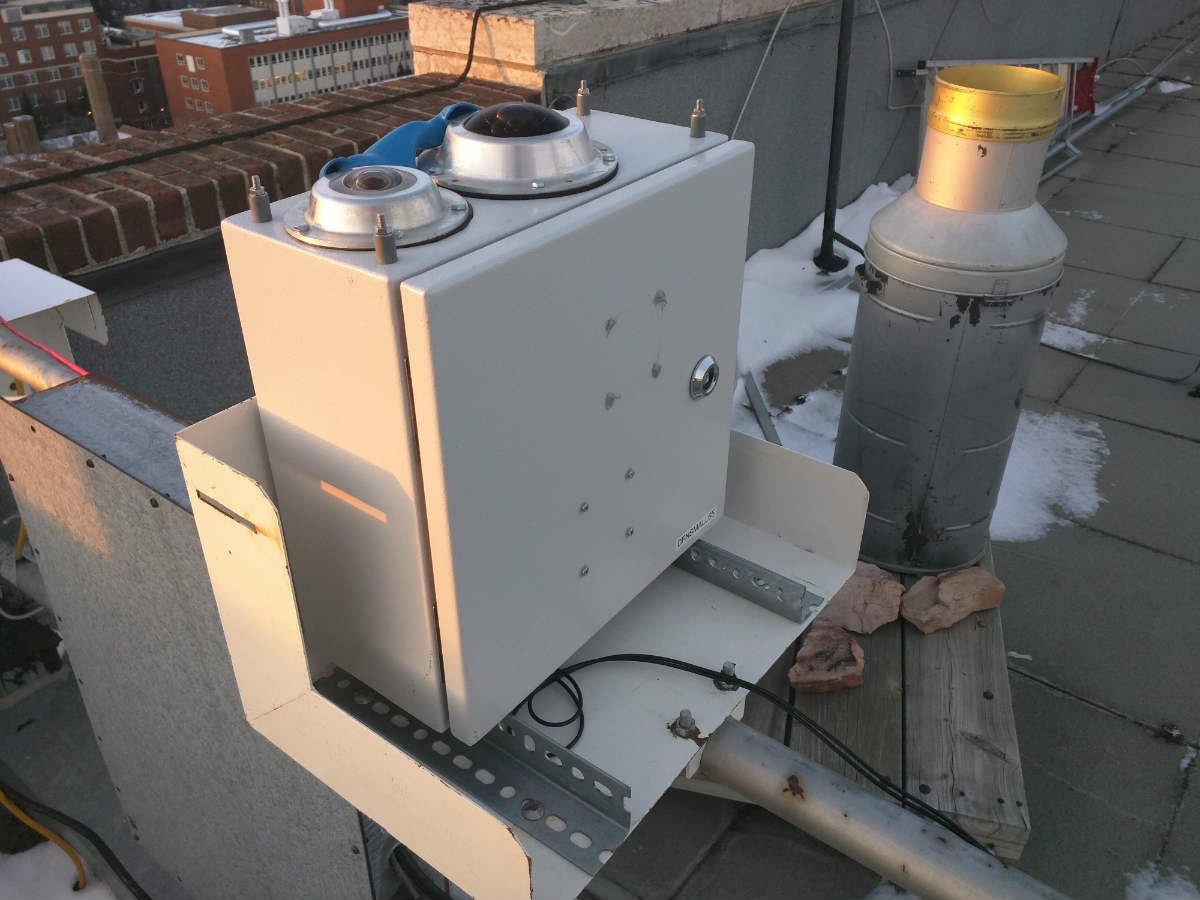
State-of-the-art all-sky cameras, like this one mounted on the roof of the Henry Marshall Tory Building at the University of Alberta North Campus, will monitor the skies of Western Canada for meteorites. Photo credit: Chris Herd
Many Western Canadians will remember the vision of a fireball blazing across the prairie sky in November 2008, and the ensuing hunt to find what we now know was the Buzzard Coulee meteorite.
Now, the time for that hunt will be cut to a fraction, thanks to a new "fireball network," made up of state-of-the-art all-sky cameras that will allow for the automated detection of meteorite-dropping fireballs in Western Canada, says University of Alberta scientist Chris Herd.
This advanced technology allows scientists to detect fireballs as they streak across the sky and triangulate the landing location of any rocks-meteorites-that make it to Earth's surface. Scientists can then collect samples from the ground more rapidly than ever before, resulting in better-preserved meteorite samples and improved scientific analysis.
"The faster we can get the rocks and bring them to our curation facility, the better the science we can do as a result," explained Herd, professor in the Department of Earth and Atmospheric Sciences and curator of the University of Alberta Meteorite Collection, one of the top facilities for preserving and studying meteorites in the world.
The new observatories are provided through an Australian Research Council grant to Phil Bland of Curtin University, in partnership with the University of Alberta. Each observatory contains two cameras-one for taking video and another for taking still photos. Each observatory is connected to supercomputers in Australia, which will analyze the data and notify of the potential meteorite fall area within an hour of the event. Over the next two years, Herd and his colleagues will deploy units across Alberta, Eastern British Columbia, and Western Saskatchewan, with the long term goal of expanding from the Rocky Mountains to Manitoba.
"The idea in the first year is to cover Alberta," said Herd. "We'll place about a dozen cameras spaced about 150 km apart across the province." Thus far, Herd and his colleagues have identified Albertan locations including Lake Louise Ski Resort, Lakeland College in Vermillion, Athabasca University, and the University of Alberta's own Miquelon Lake Research Station.
The most recent camera installation took place at the Renewable Energy Learning Centre at Lakeland College's campus in Vermilion, Alta in October 2018. This location is ideal for meteorite monitoring because of its dark skies as well as Lakeland's research expertise and state-of-the-art network connectivity at the site.
The network in Western Canada will be part of a larger, global network, including similar systems in Australia, Morocco, the United Kingdom, and the United States, and within Canada, in Southern Ontario.
Learn more about the Desert Fireball Network around the world and the University of Alberta Meteorite Collection.
